Air Marshal G C S Rajwar , commissioned in 1963 as part of the 26th Navigator Course, is a veteran of two wars. He was the navigator to the CO of No.106 Squadron in the 1971 war, then Wg Cdr R S Benegal. He wrote this piece about his missions in the war as an “Afterword” for the autobiographical book by late Air Commodore R S Benegal – Burma to Japan with the Azad Hind .
Air Marshal G C S Rajwar wrote this piece about his missions in the war as an “Afterword” for the autobiographical book by late Air Commodore R S Benegal – Burma to Japan with the Azad Hind .
Air Commodore RS Benegal MVC, AVSM, during the 1971 Indo-Pak War
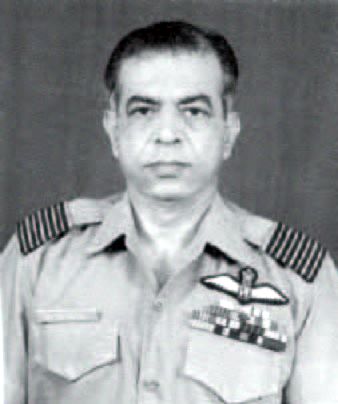
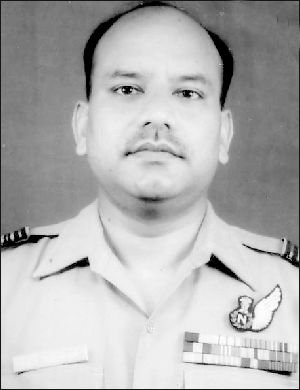 It was indeed my proud privilege to have been closely associated with Air Commodore R S Benegal during my tenure in No 106 Strategic Reconnaissance Squadron of the Indian Air Force. He was at the time commanding the Squadron as a Wing Commander. During the 1971 Indo-Pak war, I flew a large number of operational missions as a Navigator with him in a Canberra Photo Reconnaissance aircraft. I was then a very young Flight Lieutenant in the Squadron. Notwithstanding the substantial difference in our service seniority and age, he showed great humility in treating me with the utmost respect and as an equal, while flying operational missions. It is extremely rare to find a true professional of his stature. Air Commodore Benegal had outstanding qualities both as an officer and as a human being.
It was indeed my proud privilege to have been closely associated with Air Commodore R S Benegal during my tenure in No 106 Strategic Reconnaissance Squadron of the Indian Air Force. He was at the time commanding the Squadron as a Wing Commander. During the 1971 Indo-Pak war, I flew a large number of operational missions as a Navigator with him in a Canberra Photo Reconnaissance aircraft. I was then a very young Flight Lieutenant in the Squadron. Notwithstanding the substantial difference in our service seniority and age, he showed great humility in treating me with the utmost respect and as an equal, while flying operational missions. It is extremely rare to find a true professional of his stature. Air Commodore Benegal had outstanding qualities both as an officer and as a human being.
I had the opportunity to get to know Air Commodore Benegal closely in June 1971, when the two of us were sent to England to ferry a Canberra aircraft from the British Aircraft Corporation (BAC) factory in Preston, Lancashire to India. On our arrival in London, the Air Attache at the Indian High Commission informed us that there was a problem. It turned out that the BAC facility at Preston was not going to be able to hand over the Canberra aircraft for another fortnight since a final test flight had shown up some snags. We were therefore given the option of remaining in London and waiting until the aircraft was ready for collection, instead of proceeding to Preston, a small town, where we would find it difficult to pass time. While many officers would have liked the idea of a two-week stay in London, Air Commodore Benegal politely declined. As a professional, he thought it would be more prudent to monitor the progress at Preston instead of simply waiting out of sight in London. Shortly thereafter, Air Commodore Benegal and I travelled to the Preston BAC facility, where he kept a close watch on the aircraft’s progress on a daily basis. Consequently, the aircraft factory also accelerated its rectification work and the IAF’s Canberra aircraft was delivered on priority. Air Commodore Benegal’s dedication in monitoring the delivery of the aircraft was an early lesson. He was an exceedingly humble individual who always displayed a very high sense of personal integrity, and loyalty to the service and country. He epitomised the idiom, service before self.
Air Commodore Benegal was a man of few words. I do not recollect him giving long speeches to Squadron Personnel on discipline or what was expected of them. He set exceedingly high standards of professionalism and discipline simply by personal example and everyone in the Squadron felt pride in emulating him.
During the 1971 war, he led the No 106 Strategic Reconnaissance Squadron by personally piloting among the most complex and dangerous missions perilously deep within enemy territory. I remember well that all squadron personnel remained highly motivated and worked to the best of their ability during this tense and operationally demanding time. While the squadron aircrew flew operational sorties, ground engineers and technicians worked scrupulously round the clock to ensure that our Canberras were airworthy and fit to fly. The aircraft cameras worked flawlessly in the air and produced images of excellent and enduring quality, images that contributed in no small measure to India’s tactical master plan for how the war needed to be fought. The crucial squadron photo section worked tirelessly to develop and print a voluminous and steady flow of photographs obtained from aerial photography missions. Under the extraordinary and talented leadership of Air Commodore Benegal, the No 106 Squadron operated at its finest efficiency.
If there was one thing that Air Commodore Benegal was unmistakably dedicated to, it was his duty as a flying professional. He was a perfectionist and devoted a considerable amount of time painstakingly planning even the smallest details of every single mission and he left nothing out. Such attention to detail was vital for the successful completion of dangerous tasks like the kind entrusted to us, and a safe return from deep inside extraordinarily hostile airspace. This was especially critical, as we had to fly these missions deep inside enemy territory in a totally unarmed and unescorted aircraft. It was to his credit as a thorough professional and fine air force pilot that he always returned from all his assigned missions fully achieving the invariably difficult desired objectives. Even after many decades have passed since the war, I vividly remember some of the daring aerial photo reconnaissance missions that Air Commodore Benegal and I flew during the 1971 war.
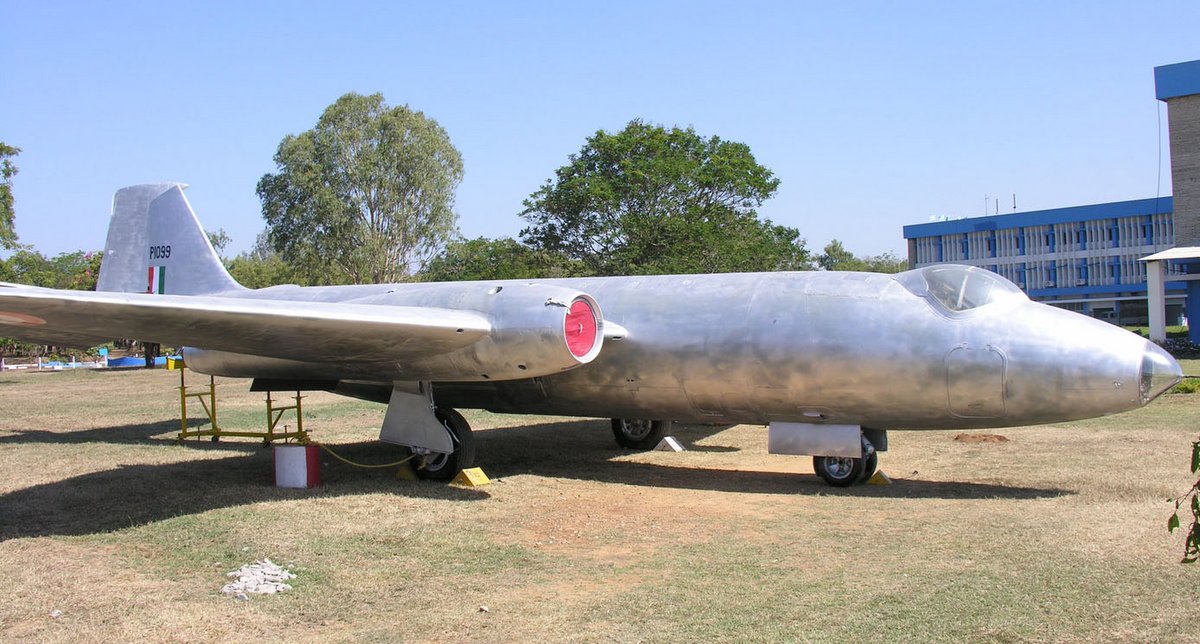
This Canberra PR.67 P1099, rests permanently at the Air Force Academy in Dundigal. This aircraft was with No.106 Squadron and was flown by Wg Cdr Benegal in December 1971 prior to the sorties mentioned here. (Photo via Air Marshal S Bhojwani)
Aerial Photo Reconnaissance of the Karakoram Highway in Pakistan Occupied Kashmir (POK).
Immediately after Indo-Pak war broke out in December 1971, highly sensitive information came supposedly through a diplomat from a neutral foreign embassy that Pakistan was receiving massive shipments of arms, ammunition, war supplies and sundry military hardware from China through the strategic Karakoram highway, which connects Kashgar in China to Khunjerab pass and Gilgit in Pakistan Occupied Kashmir (POK). If this news was confirmed, this was a very troubling development for the Government of India. Accordingly, the then Chief of the Air Staff, Air Chief Marshal PC Lal ordered our Squadron to carry out aerial photo reconnaissance of the Karakoram highway in Pakistan Occupied Kashmir (POK) to confirm whether Karakoram highway was operational, even in a forbidding month like December. We were briefed to carry out photo reconnaissance of the highway starting from Khunjerab pass to as far as practicable up to about a third of the distance to Gilgit, depending on weather conditions and possible enemy action in the area.
Air Commodore Benegal and I took off from our base in Canberra aircraft BP-745 on 6 Dec 1971 to undertake this highly sensitive mission. After an extended and rather strenuous flight, we observed that clouds rising over 40,000 feet high had covered the entire Karakoram Range. Our aircraft entered thick clouds approximately 180 nautical miles from the Karakoram highway, the target that we needed to photograph. Nevertheless, with virtually no outside visibility, we continued with the mission, relying as accurately as possible on our cockpit instruments and maintaining a safe altitude of around 30,000 ft as the average height of the mountain peaks below was 22,000 feet. We flew for 30 minutes in clouds without a single break and we could see nothing outside. Air Commodore Benegal suggested we abandon the mission, but I suggested to him that we continue for another three or four minutes to see if we would emerge from the dense cloud cover. We maintained course and after a short while, on approaching the target area suddenly our fortunes changed. We saw a gap in the clouds ahead of us with a clear view of the ground below. A quick turning dive through this cloud gap brought us almost over the pass on the Pakistan Occupied Kashmir (POK) side of the highway. The sky above us was totally overcast but the valley below was absolutely clear.
The first thing we noticed was that heavy snow had completely blanketed the Khunjerab pass. Heavy snow, snowdrifts and landslides had blocked the Karakoram highway at many points. It seemed impossible for the highway to be used for vehicular traffic. We immediately commenced our photo run and followed the road that initially wound along the Khunjerab river and then passed through Hunza – Baltit valley to Gilgit, a distance of approximately 150 miles. The average height of the mountains that flanked the valley was 20,000 feet and we were flying around the same height over the valley. Our aircraft cameras were working perfectly and we photographed about a third of this highway, as briefed. We had gathered ample photographic evidence to prove unquestionably that the Karakoram highway was unusable. Considering that we had been flying deep inside hostile territory for quite a while to complete this sensitive mission, we made a quick exit from the enemy area taking advantage of the clouds and flew back to base.
In spite of less than desirable light conditions because of an overcast sky, the images that our mission produced were found to be of exceptionally high quality. Apart from providing very valuable data and photographic inputs from deep inside enemy territory, our mission finally dispelled all fears that the Karakoram highway was operational in the month of December.
A few years after the 1971 war, while I was attending the Staff Course at Royal Air Force Staff College Bracknell in the UK, I met Wing Commander (later Air Vice Marshal) Abbas Mirza of the Pakistan Air Force (PAF). He was in the Staff Course along with me. On one occasion, Wing Commander Abbas Mirza casually mentioned to me that during the 1971 war, he had narrowly missed shooting down an IAF Canberra aircraft over the Gilgit area. Abbas Mirza was a Mirage pilot at a forward fighter base of the PAF when he was scrambled to intercept the Canberra being flown by Air Commodore Benegal and me. By the time, Abbas Mirza’s Mirage fighter reached the area, our Canberra had returned into Indian territory well beyond his aircraft’s shooting range. It was a very close shave. At the time, we had no idea that a formidable Pakistani fighter armed with air-to-air missiles had given us chase. Air Commodore Benegal’s instincts, timely thinking and meticulous planning were instrumental in the success of that memorable mission.
Aerial Photo Reconnaissance of Longewala Battle Area in Rajasthan Sector
A large contingent of T-59 tanks of the Pakistan Army had crossed the international border into India and was advancing towards the now legendary Longewala in the Rajasthan sector. It was reported that on the SOS received from the Indian Army formations, IAF pilots flying Hunter aircraft from Jaisalmer had not only stopped the Pakistani tanks in their tracks but also achieved a number of kills by attacking the armoured columns with fierce air to ground firing. No 106 Squadron was called upon to verify reports of the destruction that had been dealt to the enemy tanks by our Hunters. The task involved aerial photography of the destroyed Pakistani tanks and aerial photo reconnaissance across the border to establish whether any fresh enemy armoured reinforcements had arrived in preparation for another offensive into Indian territory.
We took off from our base on 8 December 1971 and flew our Canberra (BP-745) to the Longewala battle area in Rajasthan Sector. After contacting our own radar for surveillance, we crossed the border into Pakistan. We saw a number of destroyed and burnt Pakistani tanks and quickly began taking aerial photographs. From our aircraft, we did not notice any fresh enemy tank reinforcements on Pakistani territory. While we were busy on our photography mission, our radar informed us that Pakistani fighter jets were approaching the area. We made a hasty return toward Indian territory. Just as we crossed the border, Air Commodore Benegal noticed two IAF Hunters positioning for an attack on our Canberra. Since we were on the same radio frequency, we heard the Hunter formation leader calling his Number 2 to prepare for attack. Mistaken identity in the air could have disastrous consequences. A quick thinking Air Commodore Benegal yelled on the R/T (radio telephony) to identify himself. The Hunter formation leader quickly replied ‘We are sorry Sir’.
It was quite understandable that the Hunters mistook us for enemy aircraft as we crossed the border from Pakistan at high speed and at very low level. Thereafter, the same Hunters provided us critical air cover in the battle area and escorted us while we carried out photo reconnaissance. It was another narrow escape for us.
Even under the intense pressures of war, the confusion it generates, and the perpetual life and death situations that it creates, Air Commodore Benegal was always quick to react. This quick thinking was often instrumental in our success and safe return from consistently dangerous missions.
After we landed at the base, the photographs we had taken from the Canberra were developed quickly and, as usual, were of superb quality. One particular photograph taken by us showed numerous tank tracks crisscrossing the desert sand near Longewala, left by desperate Pakistani tanks under a blistering attack from our Hunters. This iconic photograph was released with some other photographs of destroyed and burnt Pakistani tanks by the Government of India and was widely published in almost all the daily newspapers.
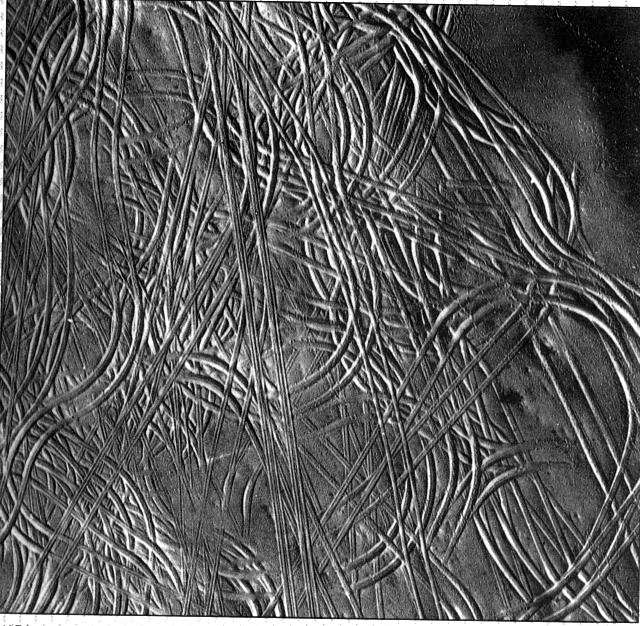
The iconic PR photograph showing the tank tracks left on the desert sand by the destroyed T-59 tanks
As an enduring tribute to this finely conducted mission, the legendary photograph is also proudly on display at the VIP entrance foyer of Indian Air Force Headquarters (Vayu Bhawan) in New Delhi.
Aerial Photo Reconnaissance of Gwadar Bay near Pakistan-Iran Border
The Indian Navy had received intelligence reports that Pakistan Navy ships had moved out of the Karachi harbour area and were hiding in Gwadar bay close to the Pakistan-Iran border. No 106 Squadron was tasked to carry out aerial photo reconnaissance of the Gwadar bay area. We took off for the mission on 10 December 1971 after refuelling at a forward air base. The long and gruelling sortie entailed very accurate and careful fuel planning for our safe return with marginal fuel. At the same time, we had to ensure that we flew in a specific operational profile to avoid detection by enemy radars.
On our way to Gwadar bay, we flew over an Iranian oil tanker headed for Karachi. On approaching Gwadar bay, we found that there were no Pakistan Navy ships there. Nevertheless, we photographed the Gwadar bay area. While flying over the Gwadar bay we discovered a landing strip just north of the bay and noticed an Iranian transport aircraft was offloading supplies. We seized the opportunity of photographing this landing strip as well.
We finally returned to Bombay and, as anticipated, were critically low on fuel. Accordingly, Air Commodore Benegal requested Bombay air traffic control for a direct approach for landing, and clearing the circuit of other aircraft, as we did not have enough fuel for an overshoot. The pilot of a Swissair aircraft, taxiing out for departure, misunderstood the instructions of Bombay air traffic control and thought the airfield was under attack by Pakistani fighter aircraft. He hurriedly taxied back to the parking bay and quickly offloaded all his passengers.
General Accounts of aerial photo reconnaissance missions flown by No 106 Squadron during the war
During the war, the No 106 Squadron flew a number of important missions covering enemy targets in both, the western and eastern sectors.
I recall that the Indian Army and the Indian Navy had requested some of these missions. The Army requested aerial photo reconnaissance of Pakistani army deployments so that they could plan their offensive operations. The major thrust was in the eastern sector for the Indian Army’s advance towards Dhaka. The Squadron carried out aerial photo reconnaissance of some selected approaches for the Indian Army’s possible offensives and suitable dropping zones including in the Tangail area for airdrop of our troops in East Pakistan locations. Subsequently, a battalion of an Independent Para Brigade carried out the airdrop with its men and equipment in the Tangail area with the help of IAF transport aircraft. Such kind of large-scale para drop operation inside enemy territory had never been attempted earlier in the history of India and was a great success. The Brigade Commander of the Para Brigade immediately sent a congratulatory message to Air Commodore Benegal for the prompt and excellent photo coverage provided, which contributed substantially towards the success of the airdrop operation.
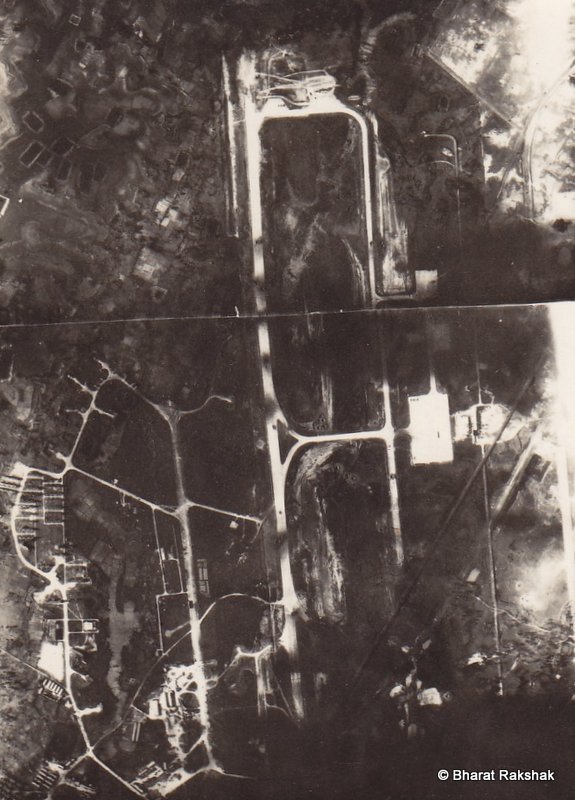
Kurmitola airfield and the bomb damage inflicted by the MiG-21s – Photograph snapped by Canberras of 106 Squadron.
The Navy had requested photo reconnaissance of the Cox’s Bazaar airfield near the then East Pakistan-Burma border, Chittagong harbour area and Chittagong airfield. The photo reconnaissance missions flown by the Squadron proved that there were no enemy Navy ships at Chittagong harbour and there were no enemy aircraft at Cox’s Bazaar and Chittagong airfields.
The Squadron was also tasked to fly reconnaissance missions over Kurmitola and Tezgaon airfields near Dhaka to assess the damage caused by the bombing attacks carried out by our MiG-21 fighters. The photographs taken by the Squadron revealed that the pinpoint accuracy of the aerial bombings carried out by our MiG-21s had damaged the runways extensively at both the airfields, rendering them completely unusable to the enemy. During the photo runs over these airfields, there was intensive ack-ack (anti-aircraft) fire from enemy air defence guns, but our Canberras did not sustain any damage. Photo reconnaissance missions were also carried out over Ishurdi and Jessore airfields and a large area around Jessore was covered to facilitate the Army’s major offensive into East Pakistan.
The various sorties flown by Wg Cdr R S Benegal and his navigator, Flt Lt G C S Rajwar (The author) during the 1971 war. Each of these “Task Specials” (Red lines) were preceded by meticulous planning and long flights to staging airfields.(Black Lines)
Air Commodore Benegal remained extremely committed and involved right through the 1971 war. Being the Commanding Officer of the Squadron, he was responsible not only for the missions he flew himself but also for the other operational tasks undertaken by the Squadron.
He spent a considerable amount of flying time transiting between the eastern and western sectors to undertake missions over both the fronts. As far as I remember, he flew the highest number of aerial reconnaissance missions in the Squadron, a commendable example set by a commanding officer. He had to frequently visit Air Headquarters for briefing and debriefing before and after each important mission. It was to his credit that despite the tremendous flying fatigue, pressure of work and lack of rest for extended periods, he always remained calm and composed and continued to function at remarkable peak efficiency.
On 17 December 1971, the war came to an end with the en masse surrender of Pakistani troops in East Pakistan and declaration of a ceasefire by the Indian government. That same night at 11 PM, the All India Radio news bulletin announced the first list of defence personnel decorated for gallantry during the war. This list contained two names from No 106 Squadron. Air Commodore Benegal had been awarded the ‘Maha Vir Chakra’ and I had been awarded the ‘Vir Chakra’.

Wg Cdr R S Benegal, CO of 106 Squadron at the Award Investiture for his Maha Vir Chakra with President V V Giri.
In the subsequent lists, additional gallantry awards were announced for No 106 Squadron. In all, the Squadron received 1 Maha Vir Chakra, 4 Vir Chakras, 4 Vayu Sena Medals and 4 AOC-in-C’s Commendations.
The contributions made by No 106 Squadron under the able stewardship of Air Commodore Benegal, to the overall war effort of the country were recognised at the highest level of the Government of India.
The Full size and miniature medals of Air Commodore Ramesh Sakharam Benegal . (Photo Courtesy : K S Nair)
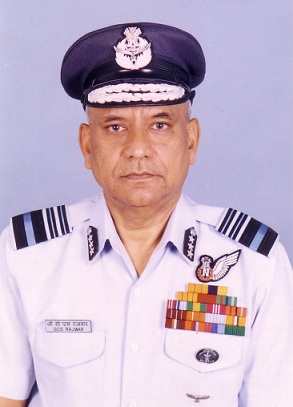 © Air Marshal G C S Rajwar . Air Marshal Rajwar was commissioned in 1963 as part of the 26th Navigator Course. He is a veteran of two India-Pakistan wars. He was the navigator to the CO of No.106 Squadron in the 1971 war, then Wg Cdr R S Benegal. Earlier, during the 1965 war, he was with No.16 Squadron in the eastern sector. He took part in the bombing of Chittagong airfield and was an eye-witness to the attack on Kalaikunda.
© Air Marshal G C S Rajwar . Air Marshal Rajwar was commissioned in 1963 as part of the 26th Navigator Course. He is a veteran of two India-Pakistan wars. He was the navigator to the CO of No.106 Squadron in the 1971 war, then Wg Cdr R S Benegal. Earlier, during the 1965 war, he was with No.16 Squadron in the eastern sector. He took part in the bombing of Chittagong airfield and was an eye-witness to the attack on Kalaikunda.